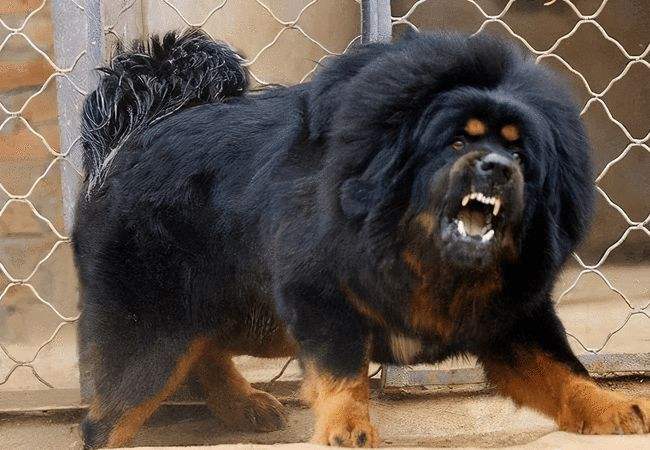Tibetan Mastiff
IUCN
LCBasic Information
Scientific classification
- name:Tibetan Mastiff
- Scientific Name:འདོགས་ཁྱི,dogs khyi,molosser
- Outline:Carnivora
- Family:Canidae
Vital signs
- length:120cm
- Weight:50-75kg
- lifetime:13-20year
Feature
The famous "Chinese magic dog"
Distribution and Habitat
Native to Tibet, China
Appearance
The ears are medium in size, V-shaped, naturally hanging, close to the face and lifted naturally when alert, and covered with short soft hair. The stop is deep and distinct. The eyes are medium in size, deep-set, naturally set apart in almond shape, and slightly slanted. They are shiny in black and very lively. The face is broad and the nose is strong. The nose is broad and large, and the inside of the nose is turned outward. The shoulders are smooth and the bones are muscular. The front feet are cat-like, quite large, strong and strong, with hair between the toes. The nails may be black or white. A single dewclaw may be present. The hind legs are strong and muscular, with all parts angular. When viewed from the rear, the hind legs and knees are parallel. The hocks are strong and naturally hanging perpendicular to the feet.
Details
Tibetan Mastiffs are produced in the high-altitude cold zone of 3,000-5,000 meters on the Qinghai-Tibet Plateau in China. They are regarded as the guard dogs and protectors of Tibetans and are called "heavenly dogs" in Tibet. The harsh climate conditions and difficult living environment have created the Tibetan Mastiff's sturdy physical characteristics, its bravery that overwhelms the rest of the beasts, and its loyal character. Its characteristics are "big as a donkey, running like a tiger, roaring like a lion, and having a dignified appearance". At the same time, it is also recognized as the oldest dog still in existence. To a certain extent, the Tibetan Mastiff is a real living fossil.

The Tibetan Mastiff has a strong temperament, noble and proud, powerful, agile and vigorous, poor endurance, and poor memory before adulthood. The typical characteristics of this breed are high alertness, strong territorial awareness, extreme loyalty to the owner, strong hostility to strangers in the territory, and good at protecting the owner and his property. Tibetan Mastiffs are loyal and protective by nature. They are not only the best protection dogs for nomadic peoples, but also the best guard dogs for kings and tribal leaders.
Tibetan Mastiffs are tall, strong, brave, and wild. They have coarse and thick fur. The outer coat is not too long. The undercoat is dense and soft like wool in cold climates. They are cold-resistant and can sleep peacefully in ice and snow. In warm climates, they are very rare. They protect their territory and food, are good at attacking, and are strongly hostile to strangers. Although they are very affectionate to their owners, they pose a serious threat to the public in human living areas. The most ferocious dog breed in the world.
Among the Tibetan mastiffs, there are native Tibetan mastiffs, which are also called native mastiffs. They generally refer to the Tibetan mastiffs and their descendants that come directly from pastoral areas such as Qinghai and Gansu. In order to distinguish them from the fine fat Tibetan mastiffs, they are called native mastiffs.
In terms of body size, Tibetan mastiffs are giant dogs, and their fighting power is definitely not bad, but they are not the most powerful among dogs. From the perspective of various indexes, they can only be said to be ranked relatively high. In the past, there were many rumors that Tibetan mastiffs could fight tigers and lions, but in fact, they were a bit unrealistic. There is a gap in body size, and the bite force of Tibetan mastiffs is actually not as good as that of wolves. Let's just take it as hype and take a look.
Protect wild animals and stop eating game.
Maintaining ecological balance is everyone's responsibility!








